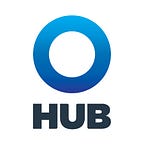How Data Analytics Can Boost Employee Health and Wellness Program Effectiveness
These days, it’s unusual to find employers that don’t offer employee health and wellness programs for everything from weight loss and overall fitness programs to biometric screenings, smoking cessation, and chronic disease management and prevention.
But do they improve employee health and job performance while reducing absenteeism and healthcare spending? One study found that disease management programs can save $136 per employee per month.1 But another study found no significant differences in short-term return on investment from employee health and wellness programs overall.2
One hurdle in preventing success is the data that guides program development. The common practice has been to leverage lifestyle and health data of those who participate in the programs, who are often the healthiest in the employee population.
By pulling data from a broader group of sources to get a better perspective of the employee populations — not just healthy workers — to uncover specific health and wellness needs. And given security concerns, small- and medium-sized employers had difficulty accessing and aggregating such data was difficult,3 especially for organizations that are not self-insured.
However, self-insured employers can immediately put their benefits data to use, working with their brokers to create effective employee health and wellness programs. These organizations can access demographic information, presentism and absenteeism data, compensation information, healthcare claims, biometric screening results, and aggregate personal health assessments.
One tech company’s hidden prediabetes problem
We worked with a tech company to reach a large segment of its employee base; with an average age of 26 years, often employees were disinclined to participate in preventive care. However, data uncovered that many young employees were suffering from prediabetes, in large part due to diet and the sedentary nature of their jobs. In response, the company rolled out a prediabetes management program, with a straightforward clinical message designed to educate workers regarding the benefits of the plan. While the program was open to all employees, the messaging was designed to attract younger workers, who might not have considered joining otherwise.
Using more and better data helps uncover trouble spots within employee populations. For example, prediabetes isn’t limited to young, desk-bound tech workers but has emerged across a wide swath of industries.
Employees of some businesses may be vulnerable to certain conditions. For instance, the sedentary nature of long-distance trucking can increase the risk of cardiovascular diseases. Warehousing and food processing workers are prone to musculoskeletal issues. Better use of analytics can help management see how employees are faring on these conditions and what they cost and how preventive programs can help.
Three steps to make the most out of data
To leverage data and improve health and wellness programs, employers can start with the following three steps:
- Make the business case with the C-suite. When leadership supports improved wellness programs through better data, it gets the rank-and-file buy-in needed to make the effort pay off.
- Consult your broker for guidance. It’s not enough to tap into traditional wellness data, like biometric screenings. You need the right data — whether it concerns absenteeism or workers’ compensation — to give the best insights into current and potential conditions that confront your employee population at large. Talk to your broker on determining what type of data is best for your program.
- Make solutions and positioning personal and relevant. If targeting a younger population, avoid one-size-fits-all messages about initiatives but personalize them instead. And ensure resources and interventions are in the right mode. A 25-year old may prefer to access help on demand, while older workers may prefer scheduled classes or programs.
